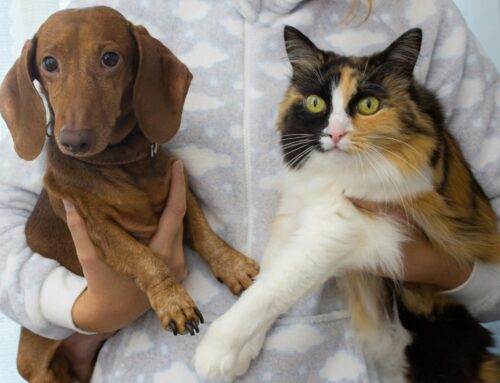Welcoming a new dog into your home can be an exciting yet nerve-wracking experience, especially if you already have a resident dog. Properly introducing dogs can make a world of difference in building a strong, lasting bond. Whether you’re bringing in a playful puppy or an adult dog, this guide will walk you through every step for a successful meeting.
Preparing for Introducing Dogs: Steps for Success
When introducing dogs, preparation is your best ally. Dogs are naturally territorial, and rushing the first encounter may lead to stress or aggression. Here’s how to set the stage for a calm and positive introduction.
Choose a Neutral Space for the Initial Meet-Up
It’s crucial to have the first meeting in a neutral area, such as a park or a friend’s yard, away from your dog’s usual spots. This reduces the chance of territorial behavior, making the introduction less stressful. Avoid starting the meeting inside your home, as your current dog may feel threatened by the new arrival.
Pro Tip: Keep both dogs on leashes with some slack, allowing them to move freely. This helps prevent feelings of restraint while still keeping them under control.
Keep the First Meeting Short and Sweet
For the initial meeting, give the dogs a few moments to sniff each other, then separate them briefly. This short interaction helps them gather information without feeling overwhelmed. Repeat this process a few times, gradually increasing the duration of their time together.
Warning: Don’t force the dogs to interact if they appear tense or scared. It’s better to take a step back and try again later.
Introducing a New Puppy to an Older Dog
When introducing a puppy to a mature dog, patience is key. Puppies are full of energy, which can be overwhelming for a senior dog. Here’s how to handle this special situation.
Allow the Older Dog to Set Boundaries
A senior dog may need time to adjust to a new puppy’s high energy levels. Give your older dog plenty of space and the opportunity to retreat if needed. Setting up baby gates or using pet barriers can help create separate zones where the dogs can see each other without direct contact.
Helpful Hint: Watch for stress signals, such as yawning, turning away, or hiding. These cues indicate that the older dog needs a break.
Use Positive Reinforcement to Encourage Calm Behavior
Offer treats and praise to both dogs during these initial encounters. Positive reinforcement helps build a connection between seeing the new dog and receiving rewards. If the older dog remains calm while the puppy is close by, reward that behavior immediately.
Reminder: Avoid scolding or harsh corrections, as these can increase anxiety and make the introduction more difficult.
How to Introduce Dogs to Your Home
Adding a new dog to your household requires thoughtful planning. If your current dog has been the only pet, they might feel threatened by a new addition. Follow these steps to help your dogs get off to a good start.
Meet Outdoors Before Bringing the New Dog Inside
Before you introduce the new dog indoors, have both dogs meet outside. This can be in your yard or at a local park. Allow them to walk together side by side and explore the area at their own pace. This helps them become comfortable with each other before facing the added pressure of being in a confined space.
Separate Food and Feeding Areas to Avoid Conflict
Dogs can be possessive about their food, leading to potential scuffles. Feed the dogs in separate areas, using different rooms if necessary. As they get more comfortable with each other, you can gradually move their feeding spots closer together.
Smart Strategy: Temporarily remove toys, chews, and bones to prevent resource-guarding behavior in the early stages.
Handling Common Issues When Introducing Dogs
Not all dog introductions go smoothly. Some dogs may take longer to warm up to each other. Here’s how to handle typical challenges during the process of introducing dogs:
Recognize and Respond to Stress Signals
Pay close attention to body language during introductions. Stiff movements, lip licking, raised hackles, or growling are all signs of discomfort. If you notice these, give the dogs some space and try to redirect their focus with a toy or treat.
Tip: Keep a favorite toy or treat handy to help ease tension during interactions.
Keep Interactions Short and Gradual
Some dogs take time to bond. If they don’t seem to get along right away, keep the meetings brief and positive. Gradually increase the length of their interactions as they start to feel more relaxed around each other.
Remember: It may take days, weeks, or even longer for dogs to become friends. Every dog has its own pace, so patience and consistency are crucial.
Introducing a New Dog to Cats and Other Pets
Introducing a new dog to a household with other pets, like cats or smaller animals, requires careful planning. Here’s how to safely integrate your new dog into a multi-pet family:
Slow and Steady Wins the Race When Introducing Dogs to Cats
If you’re introducing a dog to a cat, proceed slowly. Keep the dog on a leash during the first few encounters, allowing the cat to observe from a high or secure location. Let the cat choose when to approach, and never force the interaction.
Pro Tip: Create a safe retreat area for the cat, like a room with a baby gate that only the cat can pass through.
Supervise Interactions with Smaller Pets
During the first few weeks, closely monitor interactions between your new dog and smaller pets, especially if the dog has a strong prey drive. Even playful dogs can accidentally hurt smaller animals during rough play.
Helpful Hint: Gradually increase unsupervised time as they get more used to each other’s presence and behavior.
When to Seek Professional Help
Sometimes, despite your best efforts, dogs may not get along. If your dogs show persistent aggression or extreme fear, it’s time to consult an expert.
Consult a Certified Dog Trainer for Complex Cases
A professional dog trainer or behaviorist can offer tailored advice if your dogs are struggling to coexist peacefully. They can observe the dynamics and provide a step-by-step plan based on your dogs’ unique personalities.
Frequently Asked Questions About Introducing Dogs
How Long Will It Take for Dogs to Get Along?
The time frame varies widely. Some dogs may become friends in a few days, while others might need several weeks or months to build trust. It’s important to give them time to adjust without rushing the process.
Is It Safe to Leave the Dogs Unsupervised Right Away?
No, it’s not safe initially. Supervise interactions until you’re confident that they get along well. Leaving them alone too soon can lead to fights, particularly if they’re competing for food, toys, or your attention.
What Should I Do If the Dogs Keep Fighting?
If the dogs continue to clash despite your efforts, contact a Certified Professional Dog Trainer. An expert can help identify triggers and create a strategy to manage the behavior.
Final Advice for a Successful Introduction
Introducing dogs successfully requires patience, positive reinforcement, and a bit of time. Each dog has its own temperament, so the process may vary. Keep the experiences positive, reward good behavior, and don’t rush. The effort you put in now will set the foundation for a strong bond between your pets.
In conclusion, adding a new dog to your family can be a wonderful experience with the right approach. Follow these guidelines, stay patient, and soon you’ll see your pets form a lasting friendship.




